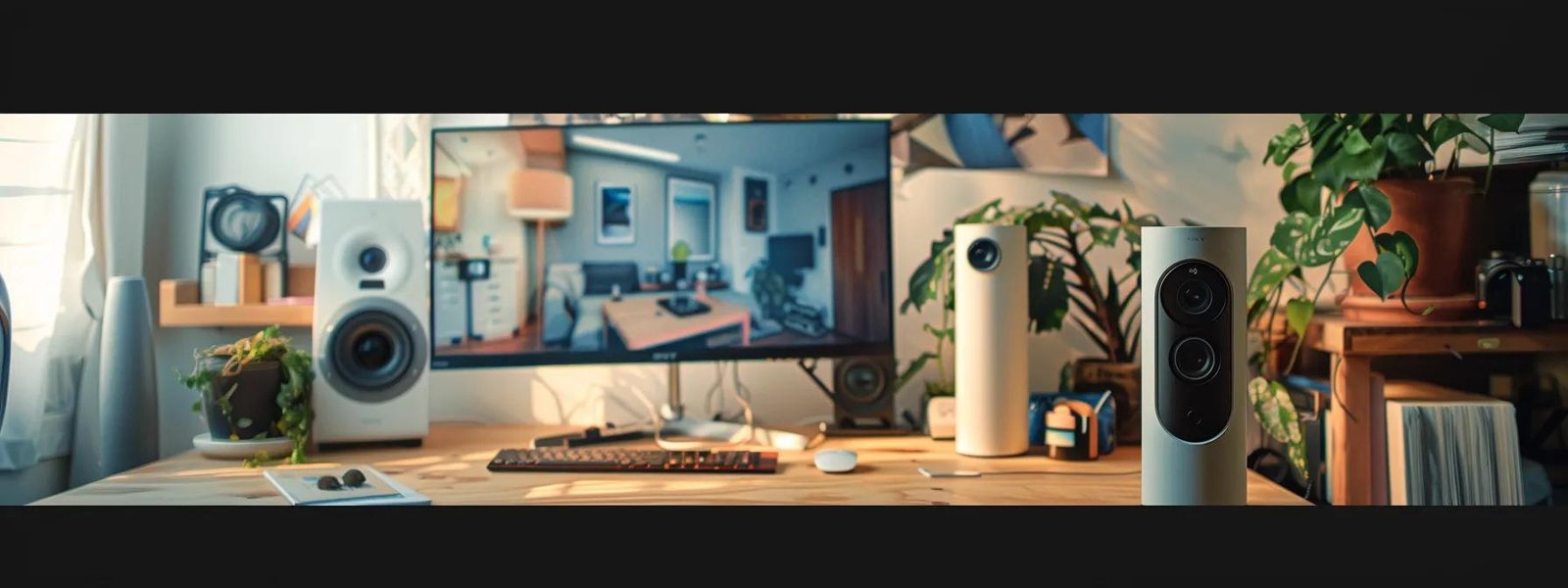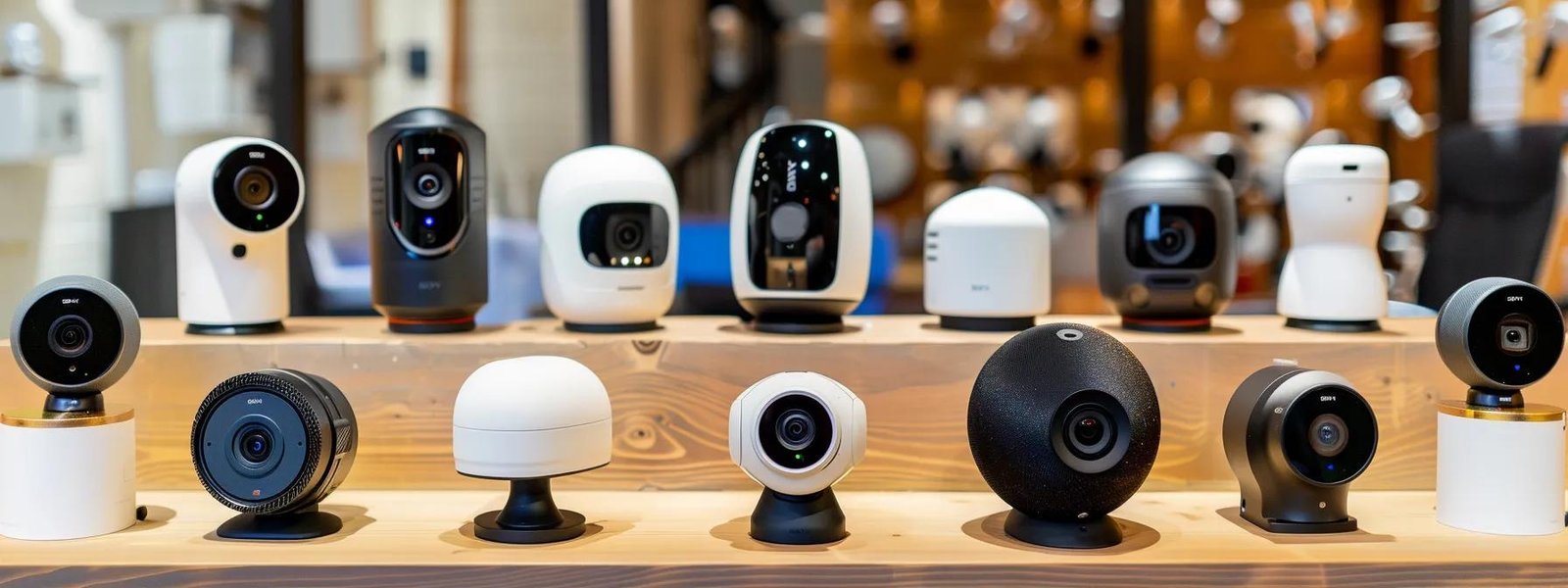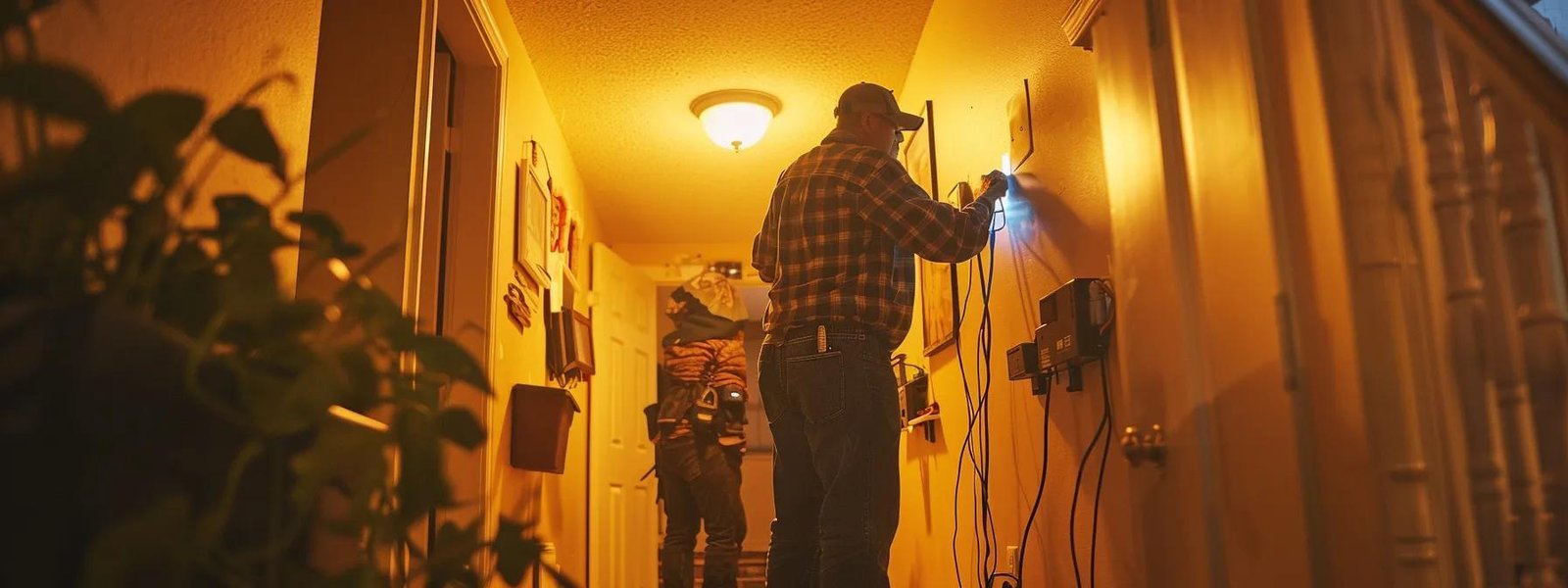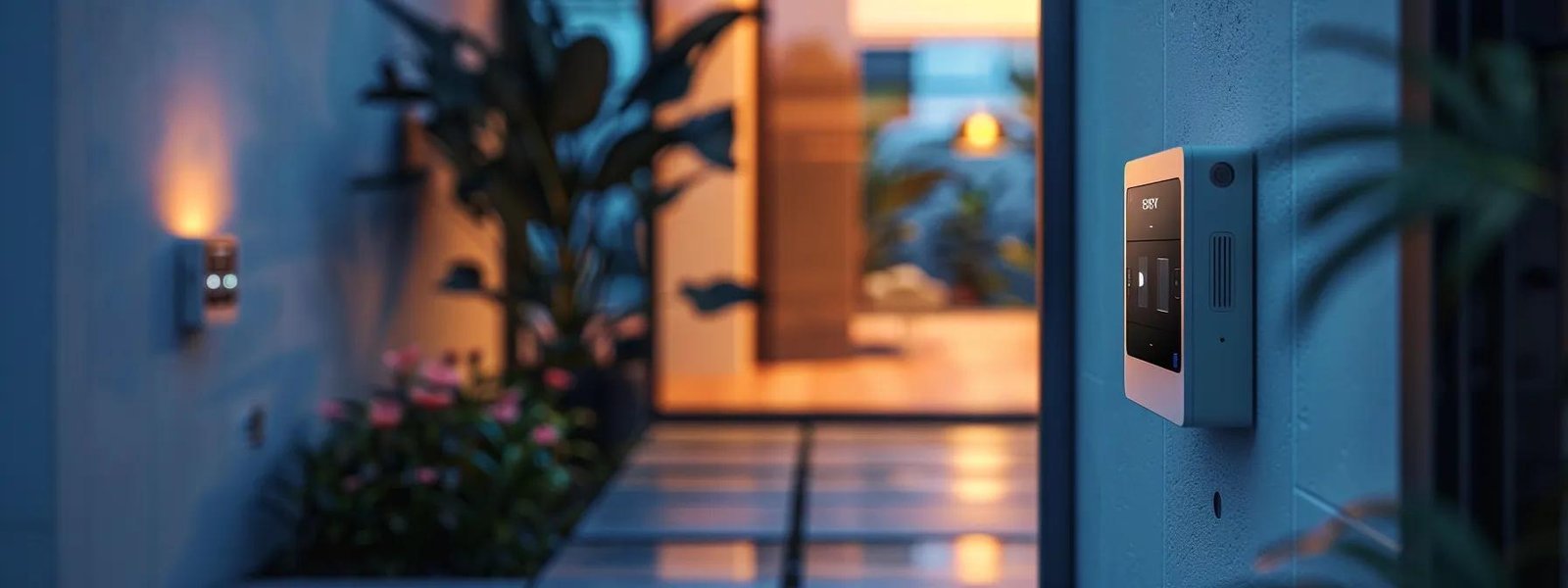
When considering a home security system, many homeowners wonder whether to choose wired or wireless options. In 2024, understanding the cost differences between these systems is crucial. This article will break down the costs of wired security systems and analyze the expenses associated with wireless systems. Readers will learn about installation costs, long-term savings, and how to choose the best system for their needs. By addressing these key points, this content aims to help homeowners make informed decisions, ensuring their homes are secure and efficient with the right electrical diagnostics and automation solutions.

Wired and wireless home security systems each offer unique features that cater to homeowners’ needs. Key features of wired systems include reliability, electrical diagnostics, and consistent power supply, while wireless systems provide flexibility and ease of installation. Understanding the technological differences, along with the advantages and disadvantages of each type, is essential for making informed decisions. This section will provide a comprehensive home security review, including insights on popular options like the Ring Alarm Pro and the importance of customer service in selecting security systems.
Wired security systems are known for their reliability and consistent power supply, making them a strong choice for homeowners concerned about burglary. These systems often require professional installation, which can be a consideration for those looking to do it yourself. Additionally, wired systems can integrate with smart home devices, such as Philips Hue lighting, enhancing overall security and customer satisfaction by providing seamless control over home environments.
Wireless security systems offer significant advantages for homeowners seeking flexibility and ease of installation. These systems typically include features such as home security cameras and smoke detectors that can be easily integrated into a smart home setup. With a touchscreen interface, users can monitor their physical security from anywhere, ensuring compliance with local laws while enhancing their overall safety and peace of mind.
The technological differences between wired and wireless home security systems significantly impact their efficiency and functionality. Wired systems typically rely on physical connections, providing a stable and uninterrupted power supply, which is crucial for devices like IP cameras and smart locks. In contrast, wireless systems offer greater flexibility, allowing for easier installation and relocation, which can be particularly appealing to customers looking for a customizable security solution. However, the reliance on batteries in wireless systems may raise concerns about maintenance and the potential for panic during power outages, making it essential for homeowners to weigh these factors when choosing the right system for their needs.
Wired home security systems typically offer greater reliability and consistent power supply, making them a solid choice for property owners who prioritize uninterrupted surveillance. However, the installation costs can be higher due to the need for professional setup, which may deter some homeowners. On the other hand, wireless systems provide flexibility and ease of installation, appealing to those who prefer a DIY approach, but they may require ongoing battery maintenance and could be less reliable during power outages. Home security providers often recommend evaluating both options based on individual needs and budget constraints to determine the best fit for each property:

Understanding the costs associated with wired security systems in 2024 involves several key factors. Initial equipment expenses can vary significantly, while professional installation fees are often necessary for optimal setup. Homeowners should also consider ongoing maintenance costs and potential hidden expenses that may arise. This section will provide insights into these aspects, ensuring homeowners are well-informed about the price and value of their investment in security, including the importance of customer support and the field of view offered by various systems.
Initial equipment expenses for wired security systems can vary widely based on the components selected. Homeowners may invest in high-definition cameras, such as 1080p models, which provide clear video footage, essential for identifying potential threats and reducing false alarms. Additionally, integrating systems like Google Nest can enhance functionality, but it is important to factor in the costs of professional installation and any necessary emergency equipment to ensure optimal performance.
Professional installation fees for wired security systems can vary based on the complexity of the setup and the specific components involved. Homeowners should anticipate fees that may range from $500 to $1,500, depending on factors such as the number of cameras, the need for a router, and any additional equipment required for optimal performance. Investing in professional installation not only ensures that the system is set up correctly but may also positively impact home insurance rates and warranty coverage, providing peace of mind that the security measures are reliable and effective.
Maintenance costs over time for wired security systems can vary based on the components used and the level of service required. Homeowners should consider expenses related to smart cameras, access control systems, and cloud storage, as these elements may require periodic updates or replacements. Additionally, investing in a virtual security guard service can enhance overall security but may add to ongoing costs, making it essential for homeowners to budget accordingly for long-term maintenance and support.
Homeowners should be aware of potential hidden expenses when investing in wired security systems. Costs may arise from the need for additional components, such as motion sensors or smart thermostats, which can enhance overall security and accessibility. Furthermore, integrating systems with devices like Amazon Alexa may require extra setup fees or subscription services, adding to the total investment. Understanding these potential costs can help homeowners make informed decisions and budget effectively for their security needs.

When analyzing the costs of wireless security systems in 2024, homeowners should consider several key factors. Upfront costs for wireless equipment, including security camera systems, can vary by brand. Installation options may range from DIY to professional services, each with associated costs. Ongoing expenses, such as battery replacements and subscription fees for monitoring services, also play a significant role in the overall investment.
Understanding these elements will help homeowners make informed decisions about their security needs, ensuring they choose the right system that fits their budget and lifestyle.
Upfront costs for wireless security equipment can vary significantly based on the brand and features selected. For instance, systems like ADT home security may offer comprehensive packages that include sensors, cameras, and virtual monitoring services, typically ranging from $200 to $1,000. Homeowners should also consider the potential for theft prevention through advanced features, which can justify the initial investment and enhance overall security.
When considering installation options for wireless security systems in 2024, homeowners have the flexibility of choosing between DIY home security setups or hiring professionals. Brands like Wyze offer user-friendly devices that can be easily installed without extensive technical knowledge, making them ideal for those who prefer a hands-on approach. However, for more complex systems that include multiple video cameras and advanced control systems, professional installation may be beneficial to ensure optimal performance and integration with existing internet access.
Ongoing expenses for battery replacements in wireless security systems can significantly impact the overall cost of home security. Homeowners using systems like the Ring Alarm or those that ADT offers should be aware that regular battery maintenance is essential to ensure reliable operation. Neglecting this aspect can increase the risk of system failure, potentially compromising safety and requiring law enforcement intervention in case of an emergency. By incorporating home automation features that monitor battery levels, homeowners can proactively manage these costs and maintain a secure environment.
Subscription fees for monitoring services are a significant consideration for homeowners evaluating wireless security systems in 2024. Many security companies offer various plans that include features such as motion detection and backup services, which can enhance the overall security experience. Homeowners should assess the reputation of these companies and the specific services included in each plan, as this can impact both the effectiveness of the installation and the long-term value of their investment.

Installation costs for home security systems vary significantly between wired and wireless options. This section will explore the complexity and time required for installation, including DIY possibilities. It will also address the impact on home structure during installation and the potential future expansion and upgrade costs. Understanding these factors is essential for homeowners considering systems like Arlo home security, which may utilize mesh networking for enhanced connectivity.
The complexity and time required for installation differ significantly between wired and wireless home security systems. Wired systems, such as those offered by ADT, often necessitate professional installation due to the need for extensive wiring and integration with access control systems, which can take several hours or even days to complete. In contrast, wireless systems typically allow for quicker setups, often enabling homeowners to install devices themselves in a matter of minutes, making them a more convenient option for those looking to avoid the potential flood of costs associated with professional services. This flexibility can be particularly appealing for homeowners who want to enhance their security without the need for security guards or extensive renovations.
DIY installation of wireless security systems, such as Simplisafe, offers homeowners a practical solution to enhance their home security without incurring high professional fees. These systems typically come with user-friendly keypads and clear instructions, allowing individuals to set up their security measures quickly and efficiently. By opting for a DIY approach, homeowners can save on installation costs while actively participating in safeguarding their property against crime.
The impact on home structure during the installation of wired versus wireless security systems can be significant. Wired systems often require drilling and running cables, which may affect walls and ceilings, especially when integrating features like power over ethernet for security cameras. In contrast, wireless systems typically involve minimal structural changes, allowing homeowners to install devices without extensive renovations, making them a more appealing option for those concerned about potential damage to their property. Home security companies often emphasize the ease of installation with wireless systems, which can be a deciding factor for homeowners looking to enhance their security without compromising their home’s integrity.
Future expansion and upgrade costs for home security systems can vary significantly between wired and wireless options. For instance, a wired security system may require additional ethernet cabling and professional installation for new components, which can increase overall expenses. In contrast, a smart security system like the Ring Alarm System allows for easier upgrades, enabling homeowners to add devices without extensive modifications, making it a more cost-effective choice for those looking to enhance their smart security over time.

Evaluating long-term costs and savings for home security systems involves several critical factors. Homeowners should consider the total cost of ownership over the years, including energy consumption and utility expenses associated with devices like doorbells and window sensors. Additionally, repair and replacement costs, along with the potential impact on property value, are essential for making informed decisions about systems such as Ecobee and other smart home technologies.
Understanding these elements will provide practical insights into the financial implications of both wired and wireless systems, helping homeowners assess their investments in security and authentication measures effectively.
The total cost of ownership for home security systems, whether wired or wireless, encompasses various factors that homeowners must consider over the years. For instance, systems like Abode and CPI Security may have different initial costs, but ongoing expenses such as battery replacements for motion detectors and subscription fees for emergency service can add up significantly. Additionally, features like floodlights integrated into the security system can enhance safety but may also contribute to higher energy bills, making it essential for homeowners to evaluate these long-term costs when choosing the right security solution for their needs.
Energy consumption and utility expenses are critical factors for homeowners evaluating the long-term costs of wired and wireless security systems. Wired systems, while often requiring professional installation, may lead to higher energy bills due to their constant power supply needs. In contrast, wireless systems typically utilize battery-operated devices, such as remote control keychains and carbon monoxide detectors, which can help reduce energy costs but necessitate regular battery replacements. Homeowners should consider the encryption features of their systems, as more advanced security measures may also impact energy usage, making it essential to assess these elements when choosing the most cost-effective solution for their security needs.
Repair and replacement costs for home security systems can vary significantly between wired and wireless options. Wired systems may incur higher expenses due to the need for specialized components and professional installation when replacing parts, such as cameras or control panels. In contrast, wireless systems often allow for easier and more cost-effective replacements, as homeowners can typically swap out devices without extensive technical knowledge or additional installation fees, making them a more budget-friendly choice in the long run.
Investing in a home security system, whether wired or wireless, can significantly impact a property’s resale value. Homes equipped with modern security features often attract more buyers, as safety is a top priority for many homeowners. For instance, a well-installed wired system may appeal to buyers looking for reliability, while a wireless system’s flexibility can attract those who prefer easy installation and customization. Understanding how these systems enhance property value can guide homeowners in making informed decisions about their security investments.

Choosing the best security system for your needs in 2024 involves assessing specific security requirements, understanding budget considerations, and exploring financing options. Homeowners should also evaluate scalability and future-proofing to ensure their system adapts to changing needs. Practical tips for maximizing value and efficiency will guide homeowners in making informed decisions that enhance their security investment.
When assessing specific security requirements, homeowners should consider factors such as property size, layout, and potential vulnerabilities. For instance, larger homes may benefit from a wired system that offers reliable coverage, while smaller properties might find a wireless system sufficient and easier to install. Understanding these needs helps homeowners choose a security solution that not only fits their budget but also effectively protects their home and family.
When selecting a home security system in 2024, budget considerations play a crucial role in the decision-making process. Homeowners should evaluate both the initial costs and ongoing expenses associated with wired and wireless systems. Financing options, such as payment plans or leasing agreements, can also provide flexibility, allowing homeowners to invest in a security solution that meets their needs without straining their finances. Understanding these financial aspects ensures that homeowners can choose a system that not only fits their security requirements but also aligns with their budgetary constraints.
When selecting a home security system in 2024, scalability and future-proofing are essential considerations for homeowners. A system that allows for easy expansion, such as adding cameras or sensors, can adapt to changing security needs over time. For instance, wireless systems often provide the flexibility to integrate new devices without extensive installation, making them a practical choice for those looking to enhance their security as their property evolves.
To maximize value and efficiency when selecting a home security system in 2024, homeowners should conduct thorough research on both wired and wireless options. Comparing features, costs, and customer reviews can help identify the best fit for individual needs. Additionally, considering systems that offer scalability allows for future upgrades without significant additional costs, ensuring long-term satisfaction and security.
Analyzing the costs of wired and wireless home security systems in 2024 is crucial for homeowners seeking effective protection. Understanding initial expenses, installation fees, and ongoing maintenance helps in making informed decisions that align with individual needs and budgets. By weighing the advantages and disadvantages of each system, homeowners can choose a solution that not only enhances security but also offers long-term value. Ultimately, a thorough cost analysis empowers homeowners to invest wisely in their safety and peace of mind.


